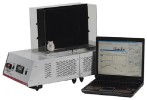Authors
V Jokinen, Y Sidorova, H Viisanen, I Suleymanova, H Tiilikainen, Z Li, T O Lilius, K Matlik, J E Anttila, M Airavaara, L Tian, P V Rauhala, E A Kalso
Lab
Department of Pharmacology, Faculty of Medicine, Haartmaninkatu 8 (Biomedicum), 00014 University of Helsinki, Helsinki, Finland
Journal
Neuroscience
Abstract
Development of tolerance is a well known pharmacological characteristic of opioids and a major clinical problem. In addition to the known neuronal mechanisms of opioid tolerance, activation of glia has emerged as a potentially significant new mechanism. We studied activation of microglia and astrocytes in morphine tolerance and opioid-induced hyperalgesia in rats using immunohistochemistry, flow cytometry and RNA sequencing in spinal- and supraspinal regions. Chronic morphine treatment that induced tolerance and hyperalgesia also increased immunoreactivity of spinal microglia in the dorsal and ventral horns. Flow cytometry demonstrated that morphine treatment increased the proportion of M2-polarized spinal microglia, but failed to impact the number or the proportion of M1-polarized microglia. In the transcriptome of microglial cells isolated from the spinal cord (SC), morphine treatment increased transcripts related to cell activation and defense response. In the studied brain regions, no activation of microglia or astrocytes was detected by immunohistochemistry, except for a decrease in the number of microglial cells in the substantia nigra. In flow cytometry, morphine caused a decrease in the number of microglial cells in the medulla, but otherwise no change was detected for the count or the proportion of M1- and M2-polarized microglia in the medulla or sensory cortex. No evidence for the activation of glia in the brain was seen. Our results suggest that glial activation associated with opioid tolerance and opioid-induced hyperalgesia occurs mainly at the spinal level. The transcriptome data suggest that the microglial activation pattern after chronic morphine treatment has similarities with that of neuropathic pain.
BIOSEB Instruments Used:
Thermal Place Preference, 2 Temperatures Choice Nociception Test (BIO-T2CT)

 Pain - Thermal Allodynia / Hyperalgesia
Pain - Thermal Allodynia / Hyperalgesia Pain - Spontaneous Pain - Postural Deficit
Pain - Spontaneous Pain - Postural Deficit Pain - Mechanical Allodynia / Hyperalgesia
Pain - Mechanical Allodynia / Hyperalgesia Learning/Memory - Attention - Addiction
Learning/Memory - Attention - Addiction Physiology & Respiratory Research
Physiology & Respiratory Research
 Pain
Pain Central Nervous System (CNS)
Central Nervous System (CNS) Neurodegeneration
Neurodegeneration Sensory system
Sensory system Motor control
Motor control Mood Disorders
Mood Disorders Other disorders
Other disorders Muscular system
Muscular system Joints
Joints Metabolism
Metabolism Cross-disciplinary subjects
Cross-disciplinary subjects Preclinical studies and opioids: role in crisis management in the United States
Preclinical studies and opioids: role in crisis management in the United States 